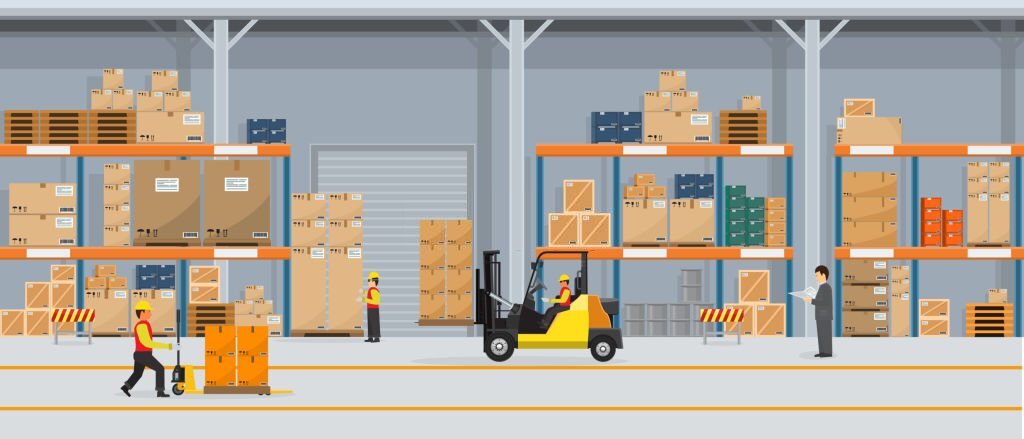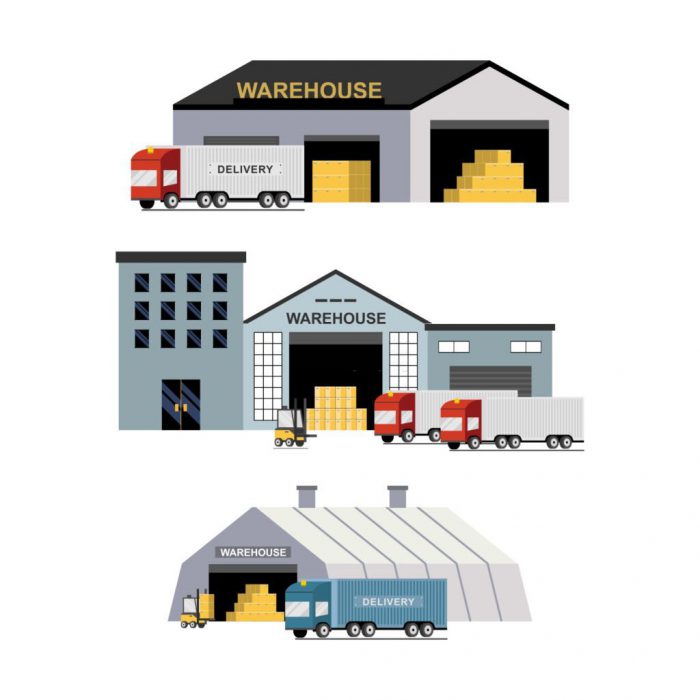Warehouse safety is everyone’s business

Stop workplace accidents in their tracks
Some people could view safety as a burden that takes time and resources away from production. Anything that slows down the speed and efficiency of a warehouse may seem unproductive. However, wise managers understand that efficient operations depend on good warehouse safety.
For most employees, an accident or death is unthinkable—until it occurs. When someone is hurt or dies, two things become immediately clear:
- Accidental injury cannot be undone
- It is likely that the actions that led to it might have been avoided
Safety in warehouses is crucial
The risk of workplace fatalities and injuries is higher in warehouses than it is in other jobs due to the wide range of sites operations. When we discuss warehousing, we’re considering a wide range of industries, including those related to manufacturing, importing, exporting, retail, wholesale, transportation, and several other company requirements.
Accidents at work injure the individuals involved, but they also have an impact on their families and co-workers. All employees are required to examine the full range of implications connected with an occurrence in a safe, productive workplace. Everyone wants to get home safely and in good health at the end of the day.
Secure warehouse conditions
Workers’ safety is ultimately the employer’s responsibility. It can be difficult to consider every conceivable component because warehouse settings are so diverse. These are areas that could have moving vehicles, large objects that are stored high up, tall ledges, fabrication or manufacturing equipment, and a variety of potentially dangerous materials.
While there are many things that go into creating a safe workplace, adequate protection and visibility are two essential elements to reducing risk among employees. We’ll examine some potential trouble spots in this section.
Pallet jack operating in asset-protecting shelves with the driver standing to the side.
Shelves are guarded from unintentional contact by corner guards or asset protection bollards.
Shelving units
The foundation of every warehouse is effective and durable racking. All the company’s product is stored in racks in an orderly, space-saving way, always ensuring maximum accessibility. Despite being constructed of sturdy materials, if they aren’t securely secured, a collapse could cause a great deal of harm.
To make sure they’re in good functioning order and unharmed, racks should go through routine examinations.
Layout is also very important. Ensure that there is enough room for warehouse vehicles to manoeuvre securely. Protective barriers are frequently advantageous in areas with heavy vehicle traffic, restricted spatial configurations, or sensitive equipment. Corner guards or posts can assist limit potential damage from car collisions.

Forklifts
Nothing would ever be done in a warehouse without forklifts, and workers would be even more prone to strain and repetitive motion injuries. While forklifts provide excellent ways to expedite shipping, it’s crucial to take the necessary safety precautions.
Everyone wants to get home safely and in good health at the end of the day.
Drivers of forklifts should make sure to receive the necessary instruction and certification. Along with helping students comprehend the equipment, this will teach them the foundations of balanced load movement and optimum weight distribution.
Additionally, it will guarantee that they have the best tools for perpetually maintaining a high level of awareness of their surroundings.
Collisions between forklift incidents and adjacent employees are possible. Moving forks have the potential to badly harm or even kill a person, even at extremely moderate speeds.
Drivers should be mindful of all around employees and know not to approach persons from behind when driving.
The training of all floor workers is equally important here as driver training. Safety animation can come to the rescue, purely for awareness purposes! Everyone working in the warehouse needs to be aware of the dangers associated with moving vehicles as well as how to stand out to motorists.
Environmental aspects may also be significant in this case. The amount of contact between automobiles and foot traffic in a warehouse should be kept to a minimum.
- Increased awareness can result from clearly designating pedestrian areas.
- Bollards in warehouses are a practical technique to mark dangerous locations while maintaining clear sightlines and unimpeded paths.
As with any piece of mechanical equipment, it’s crucial to keep all forklifts in good working order and to follow lockout procedures as necessary.
This bollard’s scratches demonstrate the value of asset protection because those marks could cause harm to the structure.
Loading stations
The sites where there is a lot of vehicle activity include loading docks. And whatever regardless of the driver’s ability level, visibility will always be a problem when backing in big trailers.
The fact that numerous third-party vendors interact with warehouse workers and equipment at loading docks is a significant problem. If non-company employees are unfamiliar with site rules and layouts, they could be a liability in warehouses.
Additionally, if there aren’t clear receiving procedures in place, inexperienced walk-ins may explore institution looking for assistance. In addition to directing customers, effective reception procedures will contribute to efficient shipping transactions.
Maintaining safe and effective loading and unloading is also crucial. Loads must be secured to eliminate the possibility of unsecured items falling during transportation. Dock entryways need to be identified.

Condition of the floor and walkways
One of the most frequent events that result in staff injuries is slipping, tripping, and falling. Like most accidents, they can frequently be avoided.
Workers underestimate possible threats and make mistakes when complacency and comfort take hold.
Numerous reasons can contribute to slippery surfaces, including leaking spilled liquids, leaking containers, grease or oil from neighbouring mechanical equipment, and other seasonal causes. To ensure proper grip in standing and pedestrian areas, mats made of rubber or other synthetic materials might be useful.
However, it’s crucial that they remain fixed and free from folding and curling, which can lead to tripping risks.
When laying up a warehouse, uneven grades and slopes should be avoided. They can pose risks for pedestrians and can be particularly challenging for cars to manoeuvre, especially when backing up and towing large loads.
Vehicles and foot traffic might both have issues because of debris and other types of clutter.
When left out, tools, packaging materials, errant power cords, and other knickknacks not only cause tripping hazards but also significantly lower the amount of available space.
As a result, there are smaller, more accident-prone workstations. Although designated storage areas and regular clean-ups may seem like a hassle, the advantages of a tidy workplace are well worth the effort.
A safety-conscious culture protects property, avoids injuries, and saves lives.
A tradition of safety
It can be simple to get used to standard tools and routines in a warehouse setting. However, workers tend to underestimate possible threats and make errors when complacency and familiarity set in.
An imposed level of diligence aims to increase positivity and awareness toward acting in a way that is responsible and considerate of all staff members.
The first step is to build a safe atmosphere by taking the appropriate safeguards. After all, most people will concur that keeping a safe and healthy workplace is one of the most important tenets.



The next time you see a safety hazard, take action. Don’t depend on someone else to notice and to notify the appropriate person. Just think of the next time you’re in a hurry and not noticing things. You could be the one to slip on that puddle or touch a broken electrical switch.